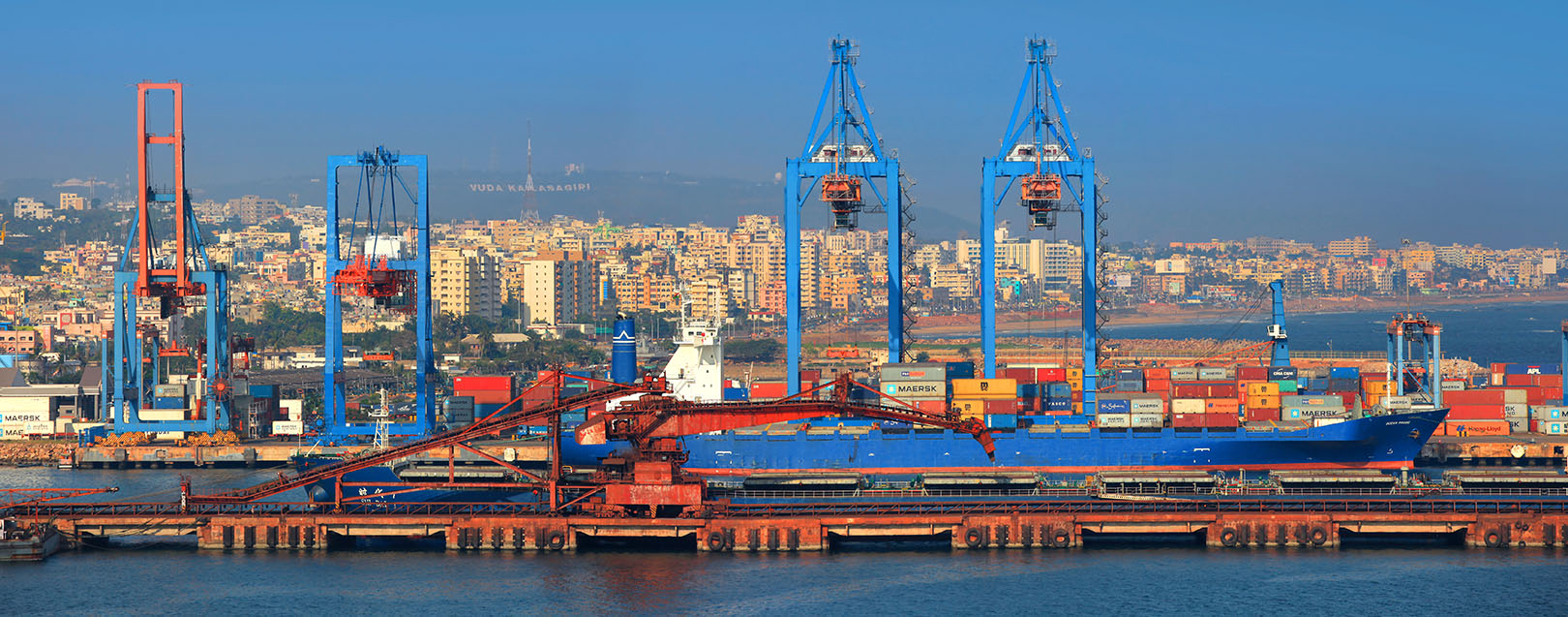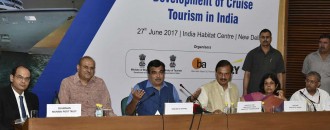
Coastal Shipping: Still a long way to go; VPT gearing Up
Sreenivasa Rao Dasari
After decades of lull in the domestic waterways, the country’s major ports are gearing up to promote coastal shipping thanks to the Sagarmala project and focus of the NDA government. Major ports including Visakhapatnam Port Trust (VPT) have started taking measures including offering incentives to boost cargo transportation using coastal shipping. ICC Shipping Association observes the legislation changes and processes but infrastructural issues are yet to be addressed properly as practised in China, Japan, EU and the US. India still faces a shortage of containers, maintenance support and policy push, said the industry body. Organisations such as Food Corporation of India (FCI) have taken measures to transport food grains using coastal shipping.
India has a long coastline of about 7,500 km studded with 12 major ports and more than 200 non-major ports. There are six inland waterways in the country with a total navigable length of 14,500 km. Despite this, India has not explored the options of using coastal shipping, which could save Rs.20,000 crore annually in the transportation of thermal coal alone. Further savings of Rs.5,500 crore and Rs.4,000 crore are forecast in steel transportation and cement respectively. However, during the past two years, there seems to be some activity in the coastal shipping segment.
 M.T. Krishna Babu, Chairman, VPT, observes that coastal shipping in India is still in a nascent stage. Speaking to The Dollar Business, about increasing the volume of trade via the inland waterways he said, “The Sagarmala programme stressed the need to optimise the model mix of cargo movement among different modes with a focus on increasing the volume of trade via inland waterways and coastal shipping. There is a strong case for tapping the potential available for coastal shipping to gain an advantage in cost of transportation and facilitate faster economic growth. The abundant coastline and the inland waterways, provide immense potential in the development of coastal shipping.”
M.T. Krishna Babu, Chairman, VPT, observes that coastal shipping in India is still in a nascent stage. Speaking to The Dollar Business, about increasing the volume of trade via the inland waterways he said, “The Sagarmala programme stressed the need to optimise the model mix of cargo movement among different modes with a focus on increasing the volume of trade via inland waterways and coastal shipping. There is a strong case for tapping the potential available for coastal shipping to gain an advantage in cost of transportation and facilitate faster economic growth. The abundant coastline and the inland waterways, provide immense potential in the development of coastal shipping.”
As part of the Sagarmala project, the Centre has projected that the movement of coal via coastal shipping could increase nearly six-fold from the current 23 million metric tonnes per annum (MMTPA) to almost 140 MMTPA by 2020. Coastal shipping was a neglected sector for the past 70 years with no political support until recently and this has resulted in high logistics costs, said ICC Shipping Association immediate past president, Capt. S.V. Subhedar.
 “Some 25 reports on the subject since 1947 have received little attention of the government. The latest KPMG report recommended an incentive of Re.1 per tonne per kilometre to create a level playing field. Coastal shipping had no lobby strong enough and similar to the trade bodies of road and rail transporters. The policy makers are now realising the advantages of coastal shipping as it offers 30% cheaper transportation and reduces the fuel bill of India. Further coastal shipping is less prone to fatal accidents compared to road and rail modes of transportation. However, the talk of promoting coastal shipping for the first time since mid-2014 still requires a strong policy push. The legislation and processes need to be addressed on the lines of domestic shipping in China, Japan, EU and US,” explains Capt. Subhedar.
“Some 25 reports on the subject since 1947 have received little attention of the government. The latest KPMG report recommended an incentive of Re.1 per tonne per kilometre to create a level playing field. Coastal shipping had no lobby strong enough and similar to the trade bodies of road and rail transporters. The policy makers are now realising the advantages of coastal shipping as it offers 30% cheaper transportation and reduces the fuel bill of India. Further coastal shipping is less prone to fatal accidents compared to road and rail modes of transportation. However, the talk of promoting coastal shipping for the first time since mid-2014 still requires a strong policy push. The legislation and processes need to be addressed on the lines of domestic shipping in China, Japan, EU and US,” explains Capt. Subhedar.
Of late, the tide seems to be turning in favour of coastal shipping, since major organisations have ventured to transport their consignments through sea. FCI (The Food Corporation of India) decided to transport 20,000 tonnes of food grains every month from Kakinada port in Andhra Pradesh to Kerala. Until now, FCI used to transport the same through roadways. Subsequently, FCI has decided to ship another consignment of rice from Visakhapatnam to Tripura via Bangladesh using the sea-river-road route.
VPT has also been aggressively promoting coastal shipping. Nearly 26% of cargo handled at the Visakhapatnam port moves coastally. Major cargo that moves on coastal shipping lines includes thermal coal for TNEB, iron ore and iron pellets to the western coast - Hazira plant of Essar and petroleum products. Considerable quantities of rice, wheat, cement and sand are also regularly shipped from VPT to the Andaman and Nicobar Islands.
Krishna Babu adds, “Port of Visakhapatnam is promoting coastal trade by extending 40% concession on the vessel related charges and cargo related charges. Two dedicated coastal cargo berths have been developed exclusively for handling coastal cargo. These berths are being developed as ‘Green Channel Facility’ for coastal cargo for hassle free cargo movement.”
Port of Visakhapatnam is geographically closer to the Mahanadi Coal Fields at Talcher and lb Valley Coalfields of Jharsuguda, Odisha. As such movement of coal generated from these mines through coastal shipping to the western and southern parts of India can result in considerable cost saving.
Elaborating the potential of coastal shipping in the days to come, Krishna Babu explains, “The container terminal with a quay length of 450 meters at the port of Visakhapatnam is the deepest among major ports and can cater to vessels of a draft up to 15 meters. Port of Visakhapatnam is identified for development into a hub port as part of Maritime Agenda. There is also scope for coastal movement of steel, cement and petroleum products from Visakhapatnam port by 2025 with the development of Coastal Economic Zone, Vizag- Chennai Industrial Corridor and Petroleum, Chemicals and Petrochemical Investment Region.”
ICC Shipping Association says Sagarmala terminals could promote transhipment, bunkering as value addition to shipbuilding and repairs. Subhedar forecasts, “Coastal shipping needs 5,000 vessels of required type, tonnage and draft by 2020, carry more than 105 domestic freight by way of modal shift and in general, India should be able to carry at least 40% of its foreign trade cargo on Indian ships. Domestic shipping needs to a reserved place in policy with respect to regulators, ministry, ports, etc. These are unconditional demands from the industry to the government.”






 to success.
to success.